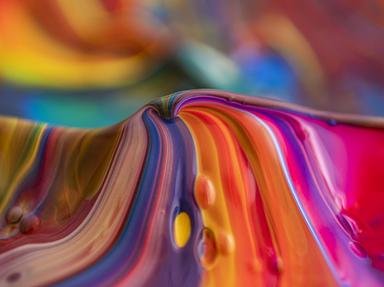Quiz Answer Key and Fun Facts
1. The painting that began the Impressionist movement, "Impression, Sunrise" (1872) was Claude Monet's testament to the economic regrowth of France after the Franco-Prussian War. Which of the following is depicted in this scene of Le Havre?
2. During the last thirty years of his life, Monet created over 250 paintings in his "Water Lilies" series depicting the flower garden at his home Giverny. Many of these were painted while he suffered from which ophthalmological affliction?
3. Featuring his wife and son, "Woman with a Parasol - Madame Monet and Her Son" (1875) is an Impressionist masterpiece picturing Monet's wife and their son. It was painted while they were living in Argenteuil, France, using what method popular with French Impressionist painters?
4. From 1900-1905, Monet traveled many times to London and painted nearly twenty different versions of the Palace of Westminster, which he could see from his windows overlooking the Thames. What was different about each painting in this series titled "Houses of Parliament"?
5. Here is the painting "Bain a la Grenouillere" (1869), which depicts a scene at a floating restaurant on the Seine. In the center is a circular island known affectionately as the Camembert. Many of the French Impressionist painters knew each other, and having gone to the floating restaurant together, Monet and what other famous artist painted this scene at the same time?
6. Catholicism was seeing a broadening rise in France, and to capitalize on that popularity, Monet was happy to paint this set of more than thirty paintings containing the same facade of this cathedral under differing conditions. In which city in Normandy was this cathedral?
7. "The Magpie" (1869) is one of just 140 snowscape paintings Monet completed in his life, and this is perhaps his most famous. It depicts a winter scene in which a small black magpie is sitting on the gate of a wattle fence.
True or false: The French Salon of 1869 accepted this painting for display without even having seen it.
8. Belonging to another series of paintings in which Monet depicted the same building in different ways, this particular painting is titled "San Giorgio Maggiore at Dusk" (1912). It depicts the monastery on the island of San Giorgio Maggiore in which coastal Italian city?
9. Claude Monet's water garden was filled with exotic plants from Asia such as bamboo and gingko, and he was fascinated by Asian art. His paintings exhibited cool reflection and peacefulness. He began a series of paintings in 1889 of his garden with what familiar structure that is found in this painting's title?
10. The "Haystacks" series of paintings were a financial and critical success while Monet was still alive.
Source: Author
trident
This quiz was reviewed by FunTrivia editor
looney_tunes before going online.
Any errors found in FunTrivia content are routinely corrected through our feedback system.

